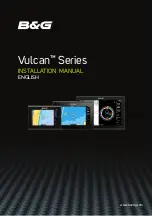
TM106601_(7/01) FMv
USE OR DISCLOSURE OF DATA CONTAINED ON THIS PAGE IS SUBJECT TO THE
RESTRICTION ON THE TITLE PAGE OF THIS DOCUMENT
.
C
O M M A N D
S
Y S T E M S
D
I V I S I O N
INSTALLATION MANUAL
RDR-1600 WEATHER RADAR SYSTEM
AC NO:
43-14
DATE:
2/24/77
DEPARTMENT OF TRANSPORTATION
FEDERAL AVIATION ADMINISTRATION
SUBJECT:
MAINTENANCE OF WEATHER RADAR RADOMES
—————————————————————————————————
1.
PURPOSE. This advisory circular provides guidance material useful to repair facilities in the
maintenance of weather radar radomes.
2.
CANCELLATION. AC 43-202, dated 6/11/65, and AC 90-20, dated 11/12/64, are cancelled.
3.
GENERAL. A radome is a covering whose primary purpose is to protect a radar antenna from the
elements. It is a part of the airframe and, therefore, should have certain physical as well as
electrical properties. Physically, a radome should be strong enough to withstand the airloads that it
will encounter and it should be contoured to minimize drag. These properties vary with the shape,
design speed, and size of the airplane on which it is to be installed. Electrically, a radome should
permit the passage of the radar’s transmitted signals and return echoes with minimum distortion
and absorption. In order to do this, it should have a certain electrical thickness. The electrical
thickness of a radome is related to the physical thickness, operating frequency, and the types of
material and construction used. This relationship is defined by a number of complex mathematical
equations which are of interest only to radome design engineers. These equations show that, for
given physical properties, a radome should have a certain electrical thickness for a certain narrow
range of operating frequencies. (This is the reason why C-band radomes will not give optimum
performance with X-band radars and vice versa.) Also, a very small variation in physical thickness
may cause a sizable variation in electrical thickness. Radar efficiency, definition, and accuracy of
display depend upon a clear, nondistorted, reflection-free antenna view through the radome.
Consequently, a radome should be precisely built for optimum performance.
4.
RADOME CHARACTERISTICS. There are two general types of radomes, the “thin wall” and
“sandwich” types. Thin wall radomes are considered to be thin relative to the wavelength of the
radar. They are generally useful when the radar frequency is low enough to permit a skin
thickness which will satisfy the structural requirements. Sandwich radomes consist of two
—————————————————————————————————
Initiated by: AFS-804







































